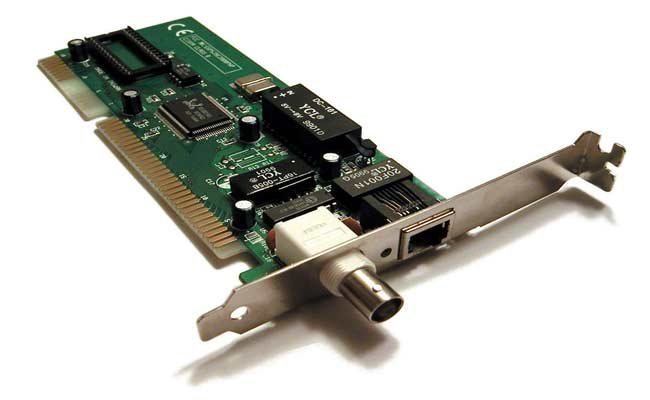What Is A Network Interface Card, Function & Its Types? An organization interface card (NIC or organization connector) is a significant piece of equipment used to give network associations with gadgets like PCs, servers, and so on.
What Is A Network Interface Card?
Prior to presenting the NIC definition, it’s important to know there are many names for the organization interface card dependent on propensities in various districts, for example, network interface regulator, Ethernet card, LAN card, network adapter, or organization connector card (NAC).
It appears to be somewhat befuddling, yet regardless of the names the NIC has, they all allude to the circuit board that empowers gadgets like PCs and organization servers to be associated with an organization. Presently, the NIC card planned as an inherent style is generally found in many PCs and some organization servers. Plus, network cards like server network cards can likewise be embedded into extension spaces of gadgets.
Figure 1: What Is An Organization Interface Card-NIC Definition
NIC definition is exceptionally straightforward, however, what does an organization interface card do and what is the capacity of NIC? Regardless layer the organization interface regulator lies, it goes about as a mediator between a PC/server and an information organization.
At the point when a client demands a site page, the LAN card gets information from the client gadget and sends them to the server on the web, then, at that point, gets the necessary information back from the Internet to show to clients.
Parts of Network Interface Card
Routinely, an organization connector for the most part comprises a regulator, boot ROM attachment, one or a few NIC ports, a motherboard association interface, LED pointers, a profile section, and some other electronic parts. Each part of a LAN card has its remarkable capacity:
Regulator:
The regulator resembles a scaled-down CPU, preparing information. As a centerpiece of an organization connector, the regulator straightforwardly chooses the exhibition of the organization connector.
Boot ROM Attachment:
This attachment on the card empowers boot ROM ability. Boot ROM permits diskless workstations to interface with the organization, expanding security and bringing down the expense of the equipment.
NIC port for link/handset:
Usually, this port will interface with an Ethernet link or handset straightforwardly, which can produce and get the electronic signs that are put on the organization link or fiber link.
Transport interface:
This interface is on the circuit board, which serves for the association between the NIC and PC or server by being connected to their extension opening.
Driven pointers:
Indicators are utilized to assist clients with distinguishing the functioning status of an organization card whether the organization is associated and information sent.
Profile section:
There are two kinds of profile sections on the lookout. One is known as the full-stature section with a length of 12 cm, and the other is the position of the safety section with a length of 8 cm. This section can assist clients with fixing the NIC in the extension space of a PC or server.
Figure 2: Components Of Organization Interface Card
Sorts of Network Interface Card
The organization interface cards can be arranged into various sorts based on various elements like host interface, transmission speed, and application fields. The accompanying part gives the subtleties.
Organization Connection-Based Classifications
In view of the manner in which an organization card gets to the organization, there are wired NICs and remote NICs. As the name shows, a wired NIC normally needs to interface a hub onto an organization with a link like an Ethernet link and fiber optic link. A remote NIC card frequently accompanies a little receiving wire, which uses radio waves to speak with the passageway to engage in a remote organization.
Transport Interfaces-Based Classifications
ISA (Industry Standard Architecture) network card: ISA transport was created in 1981, which was a standard transport engineering for IBM compatibles. Because of the low card speed of 9Mbps, the ISA transport interface currently is as of now not a perceived sort, and it’s difficult to come by it in the present stores.
PCIe (Peripheral Component Interconnect Express) network card: PCIe is the most recent norm and presently is famous on PC and server motherboards. The PCIe NIC card is accessible in five forms now, and every adaptation upholds five sorts of paths at various rates. To become familiar with PCIe network cards, read the post: PCIe Card Tutorial: Everything You Need to Know About PCI Express Card.
Port Type-Based Classifications
As per various links associated, four kinds of NIC ports can be found on the lookout. RJ-45 port is utilized to associate with turned pair link (like Cat5 and Cat6), AUI port utilized for the thick coaxial link (like AUI handset link), BNC port for the dainty coaxial link (like BNC link), and optical port for the handset (like 10G/25G handset).
Application Fields-Based Classifications
PC NIC card: Today, most new PCs have the NIC incorporated into the motherboard, so a different LAN card isn’t required. It ordinarily accompanies 10/100Mbps, and 1Gbps speed, and permits one PC to speak with different PCs or organizations.
End
The exhibition of the NIC card straightforwardly influences the information pace of the general organization. Regardless of whether you are searching for network connectors for home uses or a server network card for SMB or server farms. it’s important to get what is an organization interface card, part, and capacity of NIC. just as any kind of NIC prior to buying an organization interface card.